When he wrote the book, Lynch interviewed a wide array of urbanites to understand how laymen organized, remembered, and navigated their neighborhoods and the city at large. He found that most individuals organized their cities with five archetypal patterns: paths, edges, nodes, districts, and landmarks. One caveat of this induction is that for each person, the definitions vary. The perception of paths depends on a destination and the familiarity with the neighborhood. On the other hand, the designation of edges and districts tends to be more consistent among locals. So, unlike my neighborhood maps, I drew more on personal experience, while also searching for objective measurements.
For example, the paths map (below) is based on the map of locality. The route to a front door might be unique, but there’s an appreciable amount of travel along certain major roads. So, I picked out the bigger paths. I’m willing to bed that most people would see these as frequent routes. Note that this does account for vehicle travel.
The second element is the edge. Edges form in gaps and hard shifts between building types. Parks and hills constitute much many of the edges unrelated to zoning. These breaks are some of the more prominent physical characteristics in a city, and I believe they encourage neighborhood division like nothing else.
OK, keep going, there are three more elements…
… such as nodes, specific places where paths intersect, and locations that are destinations. Here, I’ve highlighted a handful of major ones: Van Ness, Friendship Heights, and Tenleytown. Plus, there’s Tobago, the Twixt, Wilson SHS, south Tenley and AU’s Tenleytown Campus.
If the nodes develop from intersections of major paths, then districts are the inverse of edges. These are sections of coherent form. Primarily, though districts refer to the typological and stylistic characteristics of an area.
Finally, Lynch argues that residents follow standout features while navigating, both off and on paths. Hills, towers, fine buildings, and unusual objects all serve this role. Here, in the snoozy design culture of Upper Northwest, we don’t have much distinctive architecture. Instead, the very prominent radio and water towers serve the purpose. There are a handful of buildings associated with the Metro, and that’s all I feel really grabs attention here.
I see the lack of landmark structures as the area’s second most severe urban design problem, after the lack of enclosure on residential streets. In my design for the area, these problems will need to be solved – which necessitates an architectural treatment of urban planning.
And these drawings? I don’t think these are particularly interesting as anything other than demonstrating the process, but, if you were ever interested in looking at the city in a more conventional way, here you go.
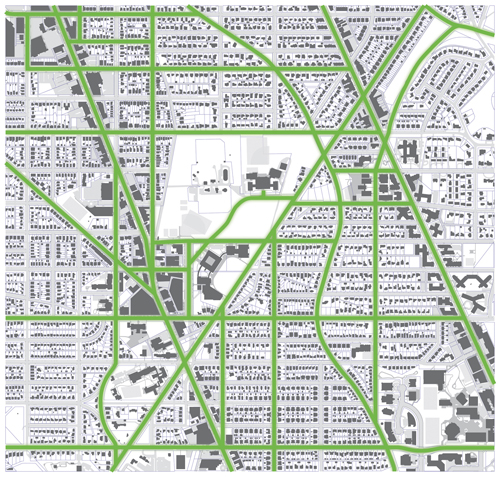
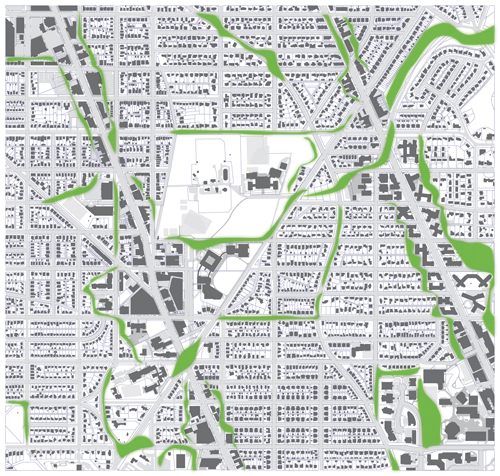
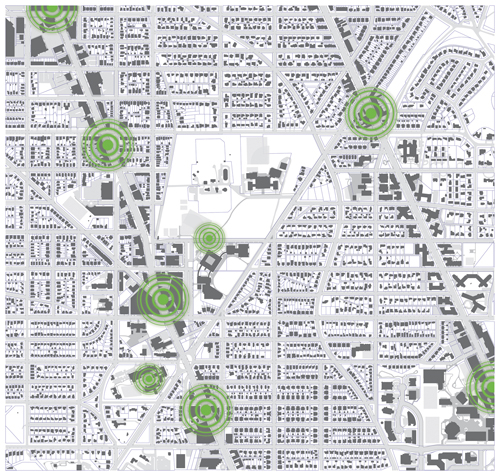
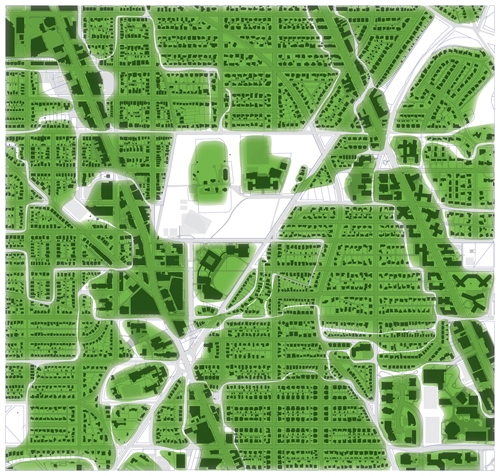
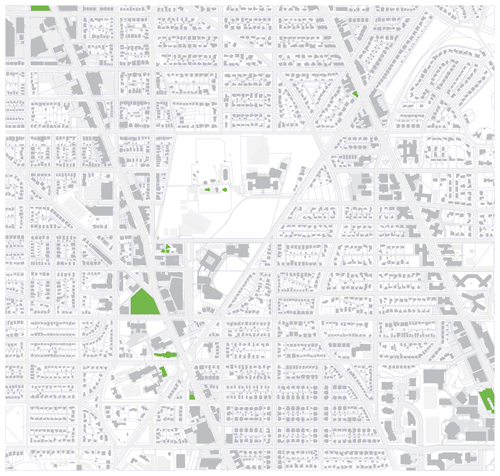
1 thought on “Reno Park Update 100302: Lynch”